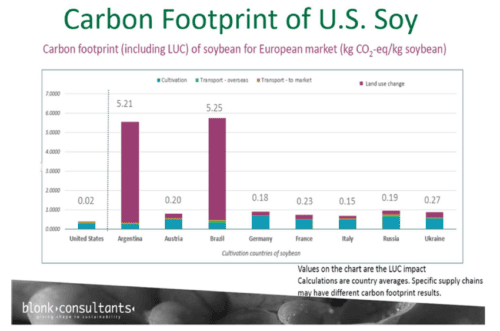From Soybeans To Strong Bonds: The Science and Sustainability Behind BreezeBond™ Hot-Press Adhesive
Leave a CommentThe right adhesive technology is essential to ensure the success of your bonding application(s). It holds materials together, directly impacting the overall performance and lifespan of the bonded structure. While numerous adhesive options are available, soybeans have emerged as a preferable resource for crafting long-lasting, eco-friendly hot-press adhesives like BreezeBond™.
This article examines how soybeans emerged as a key ingredient in creating odorless, sustainable, high-performance adhesives. We will explore the formulation of BreezeBond™ and its numerous benefits that set it apart from traditional adhesives.
Soybeans: The Key Ingredient for Sustainable Adhesives
Most people know soybeans for their nutritional value. However, it also finds use in the realm of sustainable adhesive technology. Before petroleum-based products dominated the market in the mid-20th century, soy flour played a crucial role in the manufacture of some forest products. Specifically, soy-derived adhesives were predominantly used as the bonding agents in plywood.
Thanks to an improved understanding of protein chemistry in recent years, there has been renewed interest in creating soy-based adhesives that can surpass the capabilities of their earlier counterparts to meet modern standards. One novel soybean-derived adhesive is the BreezeBond™, which boasts increased strength and enhanced moisture resistance.
BreezeBond™: A Look at This Innovative Adhesive Technology
BreezeBond™ is a water-based soybean-derived hot-press adhesive, originally developed specifically as a high-strength plywood glue, although it has also been found to be useful in numerous other hot-press applications. In addition, it is currently the only soy-based hot press adhesive free of added formaldehyde and toxic petrochemical content. This makes it an eco-friendly option as the industry shifts to sustainable manufacturing.
To modify the soy flour, a compatible reagent adds functionality to the amino acid groups in the soy’s protein (soy flour is often more than 50% protein by weight). This helps create robust bioadhesive proteins, similar to the way barnacles, sea mussels, and other bioadhesives work in nature. For instance, even the small droplets of bio-glue that make spider webs sticky have a protein base. Once the soy-based glue has been made, an oxidizing agent can be added to facilitate the formation of additional cross-linking bonds if needed. This enhances the adhesive’s strength and performance while ensuring its environmental friendliness.
Key Benefits of BreezeBond™
BreezeBond™ stands out as a compelling option for the forest products industry, offering numerous advantages, including:
- Sustainability: Aside from having no petrochemicals and added formaldehyde, BreezeBond™ is also biodegradable. A plywood-based product using BreezeBond™ , for example, has the option to be composted at the end of its life cycle, reducing landfill waste. This gives companies a path to unrestricted growth in an era of ever increasing environmental consciousness.
- Versatility: BreezeBond™ boasts adjustable viscosity, while meeting or exceeding industry standards for wet or dry strength adhesion performance. This versatility allows it to be used with existing manufacturing processes across multiple product lines. In many cases it can even be blended with existing water-soluble adhesives (e.g. UF and PVA), which may work best in some applications like particle board with decorative paper or disposable packaging. The tradeoff, however, involving blending with traditional adhesives is the emissions footprint and biodegradability of the product would be impacted meaning it may no longer be compostable.
- Numerous Applications: BreezeBond™ finds application in far reaching sectors, including construction composite materials such as plywood and OSB (Oriented Strand Board), furniture and cabinetry paneling, veneers and decorative laminates including paper foils, and even disposable packaging, all while helping to meet performance and low VOC requirements.
- Low Cost: Perhaps the most enticing feature of BreezeBond™ is its cost. Its raw materials are abundant, low cost, and readily available. Even the process to manufacture BreezeBond™ is nearly 100% yield, being made in a single pot without the need for multiple expensive steps as is the case for other complex synthetic adhesive resins. This means it is possible for BreezeBond™ to be cost competitive with even the most established industry mainstays, including urea formaldehyde (UF) resin!
- Tested and certified: BreezeBond™ has been subjected to thorough scrutiny, ensuring it meets industry performance criteria as well as regulatory requirements pertaining to VOCs (volatile organic compounds). This includes rigorous strength testing at independent laboratories, such as the U.S. Forest Products Laboratory and upon testing for volatiles (formaldehyde), it was found to have levels below quantifiable limits. This means that, when BreezeBond™ alone is used as the adhesive, the only scents to smell are those that are naturally derived from the forest products and soybeans themselves!
BreezeBond™ by Specialty Organics: Giving forest product manufacturers a sustainable, high performance, low cost option for tomorrow’s environmentally responsible business landscape.
Discover the power of high-performing, plant-based hot-press adhesives with BreezeBond™ by Specialty Organics! Our innovative adhesive technology ensures lasting performance robust and reliable bonds in a range of applications, from decorative paper to cellulosic (i.e. wooden) composites like plywood and OSB. Beyond adhesives, we offer toll manufacturing, pilot plant services, scale-up, and custom synthesis.
Let us be your partner in unlocking the full potential of your projects! Contact us now and experience the transformative capabilities of BreezeBond™.



